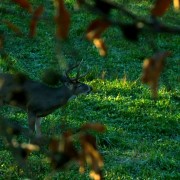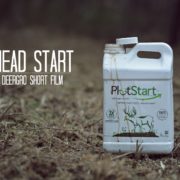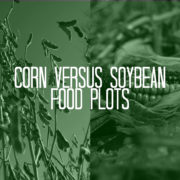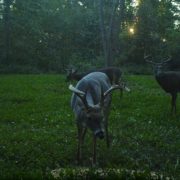Fall Food Plots | What to Plant and How to Plant Hunting Plots
How to Plant Fall Food Plots and Kill Plots
August is almost through, September is on its way, and October haunts us all. The time for fall food plots and preparation is now. If you want a lush green food plot to hunt over in October and November, plant now. Know what to plant in fall food plots? Know how to plant fall food plots? If not, now is the time to learn and get started.
How to Plant Fall Food Plots | Steps To Create A Hunting Plot
(Video) – Fall is on its way, now is the time to follow these steps on how to plant fall food plots and hunting plots.
Getting Started
The first step in planting fall food plots and hunting plots is deciding what you want to plant.
Early Attraction
In the case of this food plot, and many small hunting plots early attraction is usually in the form of perennial clover food plots. These small food plots offer a solitary and secluded food source to lure mature bucks out in daylight hours. In the video above, the clover is already established. The lush green carpet will ensure attraction during October. Soybeans are obviously another great early season attractant if they are still green throughout the season. Grains like oats that are just germinating are another great early season attractant to take note of.
Fall Attraction
Once frosts are common, and November weather sets in, clover and early season attractants become dormant and less attractive. Instead food plot species like brassicas, standing corn, and standing beans become very attractive as food sources like acorns and clover dry up. Turnips, radishes, rape, winter wheat, and standing corn or beans are all key fall/late season attractants. Many “brand” bag mixes contain these species, but a better option might be to mix what you want at the local feed and seed store or Co-op.
In this video’s case, Weston is using turnips, winter wheat, and an already established clover food plot. This means great attraction early in the season (clover) and fall/late season attraction with the wheat and turnips supplying the only green food source around.
Food Plot pH
After deciding what you are going to plant in your hunting plot or fall food plot, you have to worry about how you are going to plant it. While this usually means tilling, discing, and/or spraying herbicide over the plot, it should also mean getting the food plot pH correct. While Weston’s small hunting plot has already been treated with PlotStart, he mixes his herbicide with PlotBoost to simply supply an extra kick for the clover and for the newly germinating turnips and wheat.

After the soil preparation is taken care of, you can plant and start monitoring your fall food plot. This means putting up a utilization cage and putting up trail cameras. Fall is right around the corner, establishing early season and late season attraction means installing food plots now. DeerGro is right on pace with your planting and can get your food plot program and attraction up and running before deer season arrives.











